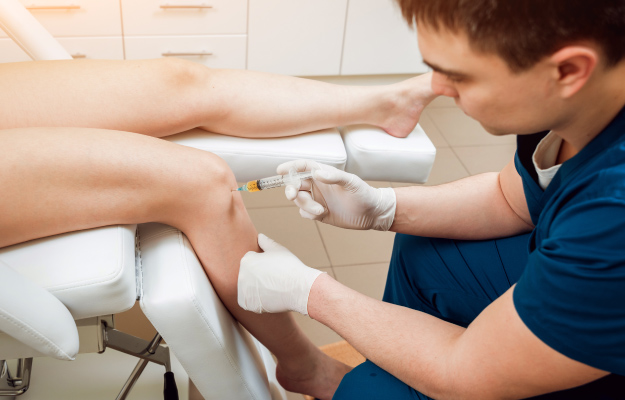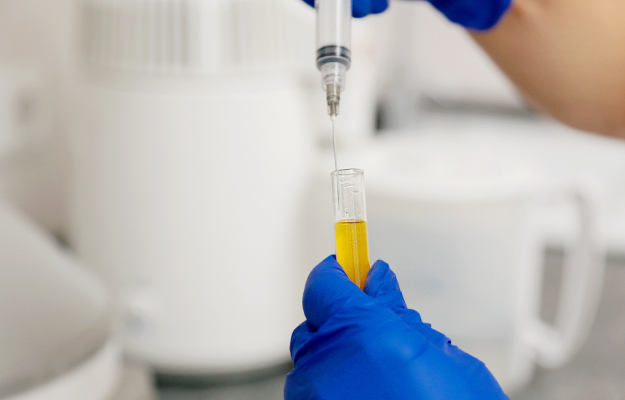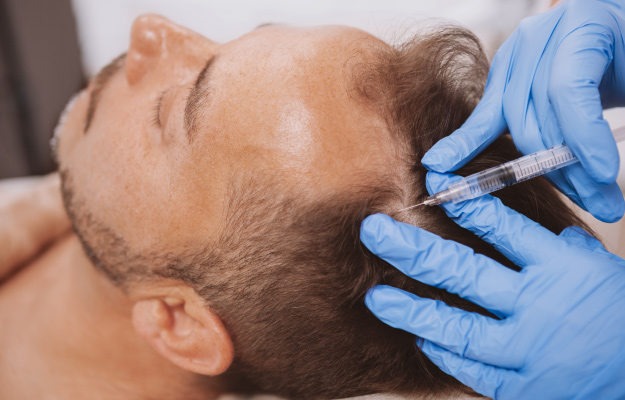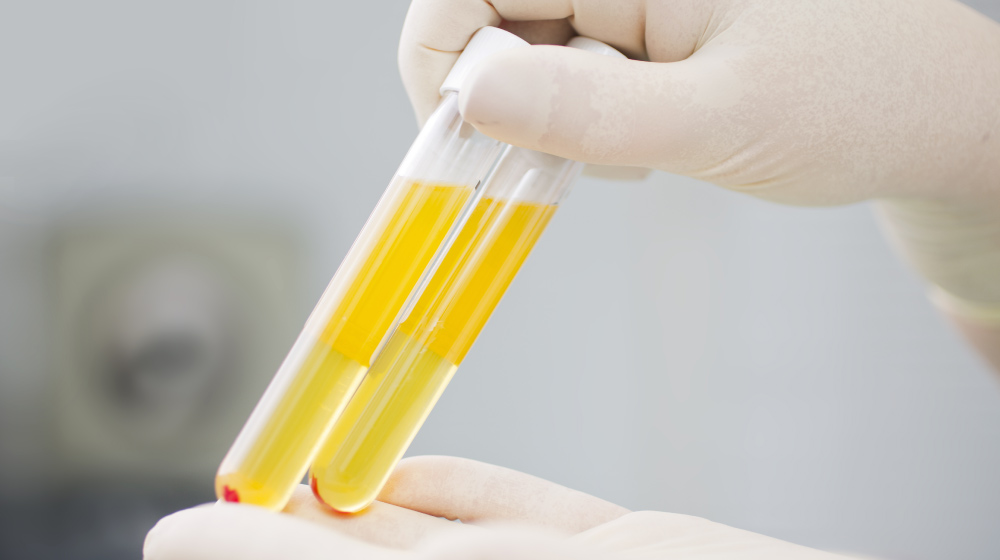Tendons and joints are integral to our musculoskeletal system, allowing us to move and perform various activities efficiently.
However, tendons and joints are highly vulnerable to injuries, and once damaged, these vital structures often face a slow and incomplete healing process.
In this context, PRP therapy for tendon and joint injuries is emerging as an alternative treatment option for various sports-related conditions, allowing athletes and those who require efficient rehabilitation to return to training and performance faster.
Learn How PRP Therapy Offers a Competitive Edge for Injury Rehabilitation
Tendons, Joints, and Injury Relapses

In sports medicine, tendon and joint injuries are challenging due to the rigorous physical demands, making restoring their function a formidable task.
Tendons and joints typically have a limited blood supply, which hinders the delivery of essential nutrients and oxygen required for quick and efficient healing.
This limited blood flow leads to a slow healing process, often marked by scar tissue formation. Scar tissue is less flexible and weaker than the original tissue, resulting in decreased range of motion, pain, and a higher risk of reinjury.
These medical challenges are further compounded in sports, where athletes constantly push their bodies to the limit, subjecting their tendons and joints to immense physical stress, increasing the likelihood of injury relapses.
PRP Therapy for Tendon and Joint Injuries
Platelet-rich plasma (PRP) therapy has emerged as a promising regenerative treatment for tendon and joint injuries. This approach leverages the self-healing capacity of the human body, offering a solution to the recurring problems associated with these injuries.
PRP therapy for tendon and joint injuries involves extracting a patient’s blood to create a plasma solution rich in platelets and growth factors.
The key to PRP therapy lies in the high platelet concentration present in the solution, which can stimulate the body’s natural healing processes.
PRP therapy for tendon and joint injuries can expedite the body’s healing ability when administered locally at the injured site or systemically.
This approach has garnered considerable attention, presenting a minimally invasive and drug-free alternative to traditional treatments for tendon and joint injuries.
How Does PRP Therapy Work?
Tendon Injuries

According to The Muscles, Ligaments, and Tendons Journal, PRP therapy induces the differentiation of tendon stem cells into active tendon cells while not increasing the risk of non-tendinous tissue formation in treated tendons.
These activated cells can grow more quickly and produce abundant collagen, a crucial component in tendon tissues. Enhanced collagen synthesis helps restore the structural integrity and functionality of the damaged tendon.
According to The Journal of Experimental Orthopaedics, PRP can increase angiogenesis, the formation of new blood vessels, during the early phase of tendon repair. This improved blood supply facilitates the delivery of oxygen and nutrients necessary for healing.
Joint Injuries
For joint injuries, PRP therapy operates differently. It diminishes inflammation within the joint, a common issue in joint injuries. Additionally, PRP can help recruit stem cells to the affected joint areas, aiding in repairing and regenerating damaged joint tissues.
According to The Journal of Clinical Medicine, PRP therapy stimulates the growth of cartilage cells, which is crucial for joint health. Also, by fostering the migration, proliferation, and differentiation of human osteoblasts, the cells responsible for bone formation, PRP therapy contributes to the regenerative process, promoting better joint integrity.
Clinical Evidence Shows Mixed Results
While the outlook holds promise, clinical evidence regarding the effectiveness of PRP therapy for tendon and joint injuries remains mixed.
Some studies support its use, while others refute its benefits.
For instance, a study published in JAMA Network found that among patients with chronic midportion Achilles tendinopathy, treatment with a single injection of intra-tendinous PRP did not reduce tendon dysfunction after 6 months, as compared to placebo.
These findings do not support the use of PRP therapy for tendon and joint injuries. However, several other trials have shown positive outcomes.
A study published in The American Journal of Sports Medicine and another in Diagnostics by MDPI demonstrated that PRP therapy may reduce the pain associated with lateral epicondylitis (tennis elbow) and rotator cuff tendinopathy, respectively.
These mixed results highlight the need for further research to identify the specific conditions and patient populations that benefit from PRP therapy for tendon and joint injuries.
What Factors Affect the Treatment?
Several factors related to the treatment process and individual patient characteristics can influence the outcomes of PRP therapy for tendon and joint injuries in clinical settings.
The treatment-associated factors include:
- Type of Preparation: The method used to prepare PRP can vary, affecting the concentration of platelets and growth factors in the final product.
- Activated or Unactivated PRP: Some protocols involve activating the PRP before injection, while others use non-activated PRP, which can impact the results.
- Mode of Application: Whether PRP is administered via injection or implantation of PRP gel can influence its interaction with the injured tissues.
- Frequency of PRP Applications: The number and timing of PRP applications during the treatment plan can vary, impacting the overall efficacy.
The patient-associated factors include:
- Patient Age: Age may affect how well a patient responds to PRP therapy, as younger individuals often exhibit more robust healing responses.
- Type of Tendon Injury: The specific tendon injury and its severity can affect the response to PRP therapy.
- Patient Activity Level: Active individuals, particularly athletes, may respond differently to PRP therapy due to the demands on their tendons and joints.
- Treatment History: Patients with prior treatments for the same injury may respond differently to PRP therapy.
- Post-Recovery Plans: Post-treatment rehabilitation and care plans can affect long-term outcomes.
What Else Can PRP Therapy Treat?

PRP therapy is not confined to just treating tendon and joint injuries. It has shown promise in various health conditions related to wound healing and regenerative capacity in humans.
Some of the conditions that can benefit from PRP therapy include:
- Osteoarthritis: PRP therapy is often used to alleviate the symptoms of osteoarthritis by reducing inflammation and promoting cartilage repair in affected joints.
- Muscle Injuries: PRP can be employed to aid in the recovery of muscle injuries, such as strains or tears, by stimulating the regeneration of muscle tissue.
- Ligament Injuries: Ligament damage, particularly in the knee, may be treated with PRP therapy to promote healing and reduce pain.
- Hair Loss: PRP is a potential treatment for androgenetic alopecia and female pattern hair loss, as it can stimulate hair follicles and promote hair growth.
- Wound Healing: PRP therapy can be used in non-healing wounds, such as diabetic ulcers, to enhance the body’s natural healing processes.
- Dental Procedures: PRP has applications in oral surgery and dental implants to aid tissue healing and reduce complications.
- Facial Rejuvenation: In aesthetic medicine, PRP is utilized for facial rejuvenation, commonly known as the “vampire facial,” to promote collagen production and enhance skin texture.
Who is PRP Therapy for?
PRP therapy is versatile and can benefit a wide range of patients, particularly those with a high demand for tendons and joints, as well as individuals whose tendon and joint functions have deteriorated with age.
The following groups may benefit from PRP therapy:
- Athletes
- Active Individuals
- Aging Population
- Patients with Osteoarthritis
- Chronic Pain Sufferers
- Dental Patients
- Cosmetic Patients
What Are the Risk Factors?
PRP therapy is generally safe and well-tolerated, primarily because it utilizes the patient’s platelets, minimizing the risk of adverse reactions.
However, there are some rare side effects and risk factors to consider:
- Skin Irritation: Some patients may experience mild skin irritation at the injection site, which typically resolves within a few days.
- Bleeding: There is a slight risk of bleeding at the injection site, primarily for patients on blood-thinning medications or with bleeding disorders.
- Infection: While strict sterile procedures are followed during PRP preparation and injection, there is a minimal risk of infection.
- Allergic Reactions: Some individuals may have allergic reactions to the anticoagulant or other substances used during the procedure.
Is PRP Therapy Worth the Cost?
PRP therapy cost can be a concern for many patients. Most insurance plans do not cover this treatment, ranging from $500 to $2,000 per treatment.
Multiple PRP injections may sometimes be recommended over time to achieve optimal results, potentially increasing the total cost.
However, think about the potential benefits and long-term value of PRP therapy. For many individuals, relief from chronic pain, improved joint function, and avoiding surgery or long-term medication can be invaluable.
PRP therapy offers the potential for a faster, less invasive recovery, reducing the overall healthcare costs associated with chronic conditions and repeated medical interventions.
Is There a Better Option?
PRP therapy is not always the best choice for everyone or every condition. Depending on the nature of the injury or medical issue, other treatment options may be considered:
- Physical Therapy: This may be recommended for certain conditions to strengthen muscles and improve joint function.
- Medications: Non-surgical approaches may include anti-inflammatory drugs, pain relievers, or corticosteroid injections.
- Surgery: In some cases, particularly severe injuries, surgical interventions like joint replacement or tendon repair may be the most effective option.
- Lifestyle Modifications: Lifestyle changes, such as weight management, diet, and exercise, can significantly impact the health of tendons and joints.
- Stem Cell Therapy: This regenerative treatment may be considered for certain conditions, leveraging the body’s stem cells to promote healing.
A thorough evaluation by a medical professional is crucial to determine the most suitable treatment option for each patient’s unique needs.

